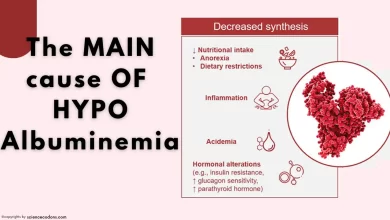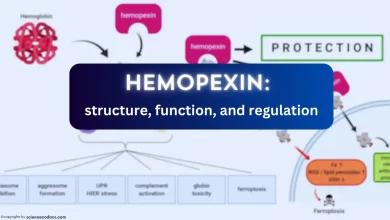Ceruloplasmin is a protein synthesized by the liver. It is responsible for distributing copper throughout the body. Copper is an essential nutrient that plays a vital role in various important functions, such as energy production, brain function, and immune function. Let’s talk more about Ceruloplasmin deficiency …

Ceruloplasmin deficiency is a rare condition with insufficient production of ceruloplasmin in the body. Serum ceruloplasmin levels can be affected by various factors such as diet, hormonal levels, and genetic abnormalities. A buildup of copper can occur in the liver, brain, and other tissues. The accumulation of copper can damage tissues and cause various health problems.
Ceruloplasmin deficiency(Low ceruloplasmin) causes
In Wilson’s disease, the primary cause of copper accumulation in the liver and other organs, such as the brain, is a defect in an ATPase copper transporter, resulting in reduced copper incorporation into apoceruloplasmin and decreased biliary copper excretion. This leads to a decrease in ceruloplasmin production and its half-life in circulation.
Similarly, in Menkes disease, a defect in an ATPase copper transporter is required for copper efflux from the cell. However, this ATPase is active in intestinal cells, and therefore, its deficiency leads to impaired absorption of dietary copper by the intestines. Consequently, due to copper deficiency, ceruloplasmin production and half-life are also reduced.
In several families, inherited deficiency of ceruloplasmin or acaeruloplasminemia has been reported. None of these patients had elevated tissue copper levels, but they had high tissue iron stores and low serum iron. This strongly indicates the physiological role of ceruloplasmin in maintaining metabolism and normal iron transport.
Secondary causes of decreased plasma ceruloplasmin include protein synthesis disorders (malnutrition, malabsorption, and liver disease) and increased urinary protein excretion due to nephrotic syndrome. Copper deficiency or its Kwashiorkor-like malabsorption disorders also lead to a decrease in blood ceruloplasmin.
| Cause | Description |
|---|---|
| Long-term liver disease | Chronic liver disease |
| Improper nutrition | Malnutrition |
| Inability to absorb nutrients from food | Intestinal malabsorption |
| Disorders that cause kidney damage | Nephrotic syndrome |
| Disorder that makes your body unable to distribute copper | Menkes syndrome |
| Disease that causes copper to build up inside organs and tissue | Wilson’s disease |
Ceruloplasmin deficiency symptoms
Ceruloplasmin is a protein that carries copper, an essential nutrient, to the rest of your body. Low levels of ceruloplasmin in your blood can cause changes in your body and energy levels. This can affect your daily functions and cause problems with the absorption of nutrients in your body. Low levels of ceruloplasmin can result in a variety of symptoms and disorders.
| Symptom | Description |
|---|---|
| Nausea | The feeling of sickness in the stomach |
| Pain in the abdominal area | Discomfort or pain in the belly |
| Constant feeling of tiredness or fatigue | Feeling of exhaustion or lack of energy |
| Changes in your behavior | Changes in mood or personality |
| Yellowing of the eyes and skin (jaundice) | Yellow discoloration of the eyes and skin |
| The feeling of shakiness (tremors) | Involuntary trembling or shaking |
| Difficulty walking | Difficulty in walking or maintaining balance |
| Difficulty swallowing | Difficulty in swallowing food or liquids |
| Anemia | Low red blood cell count |
| Nerve dysfunction (neuropathy) | Damage to the nerves |
| Loss of control of bodily movements (ataxia) | Loss of control over body movements |
| Involuntary muscle movements and abnormal posture (dystonia) | Involuntary muscle contractions and abnormal posture |
There are three main types of ceruloplasmin deficiency:
- Aceruloplasminemia is a rare genetic disorder with a complete lack of ceruloplasmin.
- Menkes disease is a rare genetic disorder with a defect in copper transport.
- Wilson’s disease is a rare genetic disorder that cannot excrete copper from the body.
Why the ceruloplasmin test is done?
The most common use of ceruloplasmin measurement is to screen for Wilson’s disease. The diagnosis of Wilson’s disease is based on physical findings such as liver disease, neurological signs, and the presence of a Kayser-Fleischer ring in the cornea. It also involves testing for low serum ceruloplasmin levels, increased urinary copper excretion, and the presence of copper in a liver biopsy. A combination of clinical and laboratory findings is necessary to diagnose Wilson’s disease. In many cases, DNA analysis can provide a definitive diagnosis, even in the absence of clinical or laboratory abnormalities.
Treatment for ceruloplasmin deficiency

Treatment for ceruloplasmin deficiency depends on the type of deficiency and the severity of symptoms. Treatment may include:
- Copper chelation therapy: This treatment removes copper from the body.
- Liver transplant: In severe cases of liver damage, a liver transplant may be necessary.
- Dietary changes: People with ceruloplasmin deficiency may need to change their diet to avoid foods high in copper.






